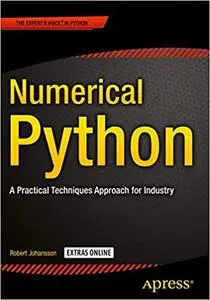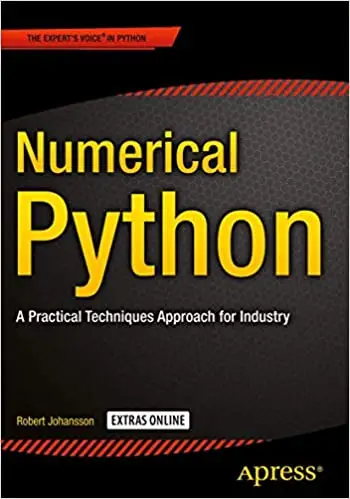Robert Johansson, "Numerical Python: A Practical Techniques Approach for Industry"
English | 2015 | pages: 512 | ISBN: 1484205545 | EPUB | 7,1 mb
English | 2015 | pages: 512 | ISBN: 1484205545 | EPUB | 7,1 mb
Leverage the numerical and mathematical modules in Python and its Standard Library as well as popular open source numerical Python packages like NumPy, SciPy, SymPy, Matplotlib, Pandas, and more to numerically compute solutions and mathematically model applications in a number of areas like big data, cloud computing, financial engineering, business management and more.
After reading and using Numerical Python, you will have seen examples and case studies from many areas of computing, and gained familiarity with basic computing techniques such as array-based and symbolic computing, all-around practical skills such as visualisation and numerical file I/O, general computational methods such as equation solving, optimization, interpolation and integration, and domain-specific computational problems, such as differential equation solving, data analysis, statistical modeling and machine learning.
Python has gained widespread popularity as a computing language: It is nowadays employed for computing by practitioners in such diverse fields as for example scientific research, engineering, finance, and data analytics. One reason for the popularity of Python is its high-level and easy-to-work-with syntax, which enables the rapid development and exploratory computing that is required in modern computational work.
What you’ll learn
- How to work with vectors and matrices using NumPy
- How to work with symbolic computing using SymPy
- How to plot and visualize data with Matplotlib
- How to solve linear and nonlinear equations with SymPy and SciPy
- How to solve solve optimization, interpolation, and integration problems using SciPy
- How to solve ordinary and partial differential equations with SciPy and FEniCS
- How to perform data analysis tasks and solve statistical problems with Pandas and SciPy
- How to work with statistical modeling and machine learning with statsmodels and scikit-learn
- How to handle file I/O using HDF5 and other common file formats for numerical data
- How to optimize Python code using Numba and Cython
Who this book is for
This practical book is for those practicing industry coders, data scientists, engineers, financial engineers, scientists, business managers and more who use or plan to use numerical Python techniques and methods.
Table of Contents
1. Introduction to computing with Python
2. Vectors, matrices and multidimensional arrays
3. Symbolic computing
4. Plotting and visualization
5. Equation solving
6. Optimization
7. Interpolation
8. Integration
9. Ordinary differential equations
10. Sparse matrices and graphs
11. Partial differential equations
12. Data processing and analysis
13. Statistics
14. Statistical modeling
15. Machine learning
16. Bayesian statistics
17. Signal processing
18. Data input and output
19. Code optimization
20. Appendix: Installation
My Link



